Getting Started with Affordable Terrarium Decorations****
You can transform your terrarium into a stylish mini-landscape without breaking the bank. Start with simple, budget-friendly items like pebbles, which add texture and aid drainage; use about 1-2 inches at the base. These small stones, often found at craft stores, set a natural foundation. Curious about other easy additions to elevate your design? Stick around for practical tips on nine more creative ideas.
Contents
- 1 Pebbles and River Rocks for Natural Texture
- 2 Driftwood Pieces for Rustic Charm
- 3 Moss Varieties for Lush Greenery
- 4 Miniature Figurines for Playful Accents
- 5 Colored Sand for Vibrant Layers
- 6 Small Shells for Coastal Vibes
- 7 Tiny Pinecones for Woodland Appeal
- 8 Glass Beads for a Touch of Sparkle
- 9 Handmade Clay Ornaments for Personal Flair
- 10 Repurposed Trinkets for Unique Details
Pebbles and River Rocks for Natural Texture
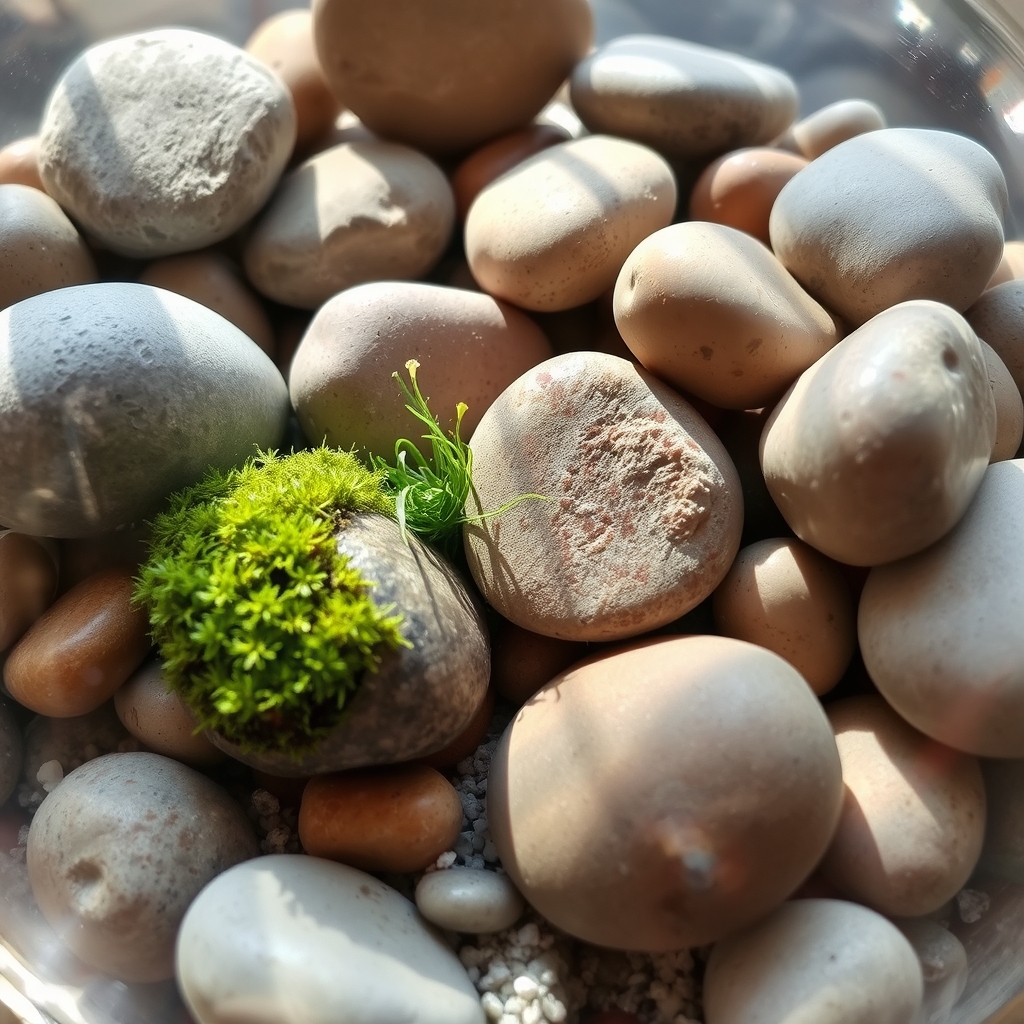
Pebbles and river rocks are an excellent and affordable way to add natural texture to a terrarium. These small stones come in a variety of sizes, shapes, and colors, making them versatile for creating a realistic landscape. Whether you’re mimicking a desert environment or a lush forest floor, pebbles and river rocks can serve as a base layer or decorative accents that enhance the overall aesthetic of your miniature ecosystem.
Beyond their visual appeal, these materials are practical for terrarium setups. They help with drainage by preventing excess water from pooling at the bottom, which can protect plant roots from rot. You can easily find pebbles and river rocks at local garden centers, craft stores, or even collect them from nature (ensuring they are cleaned and sanitized before use) to keep costs low.
Additionally, arranging pebbles and river rocks allows for creative expression. You can create pathways, define specific areas, or layer them with other natural elements like moss or driftwood to build depth and interest. This simple addition not only elevates the look of your terrarium but also provides a natural environment for any small creatures or plants within it.
Driftwood Pieces for Rustic Charm
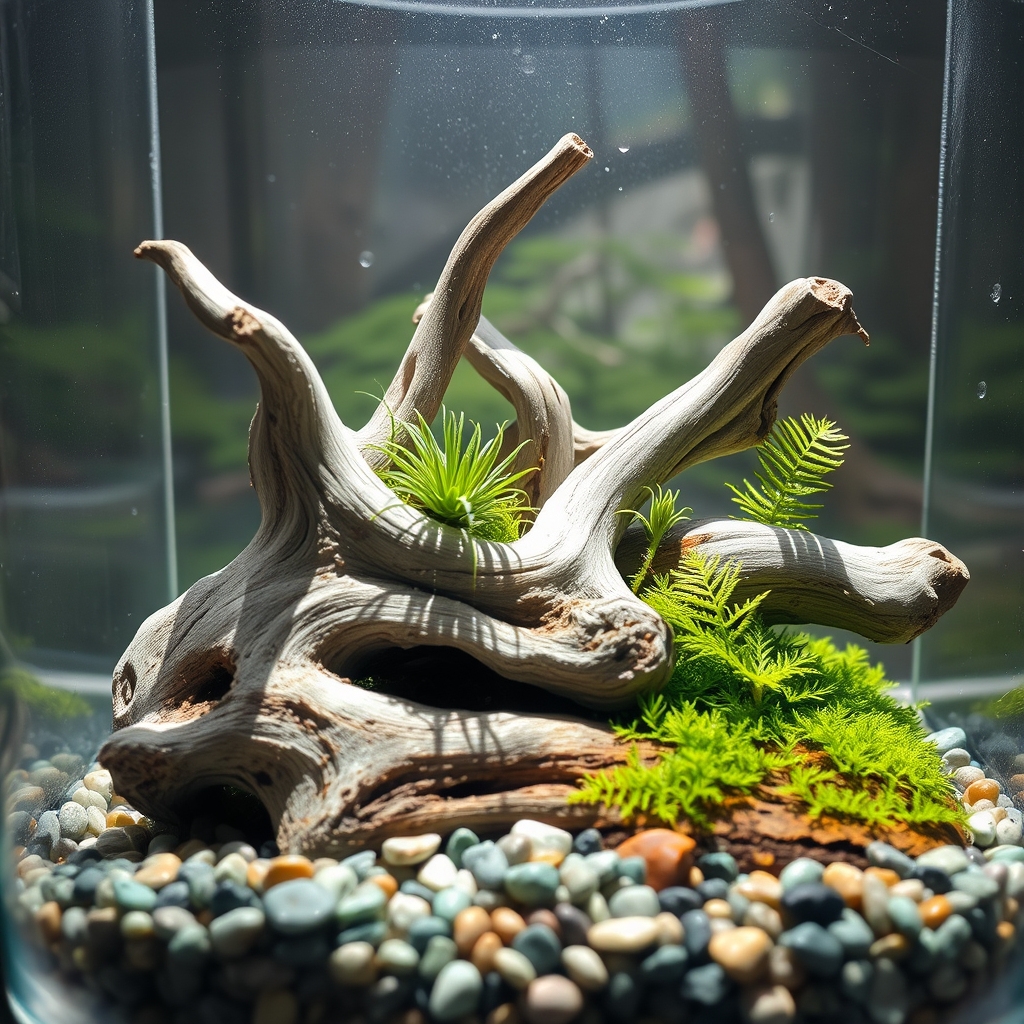
Driftwood pieces are an excellent choice for adding a touch of rustic charm to your terrarium. These natural, weathered wood fragments bring an organic and earthy aesthetic that complements a variety of terrarium themes, from forest landscapes to desert setups. Their unique shapes and textures create visual interest and provide a natural perch or hiding spot for small reptiles, amphibians, or invertebrates.
Incorporating driftwood into your terrarium is both affordable and easy, as it can often be sourced from beaches, rivers, or even purchased at a low cost from pet stores or online retailers. Before adding driftwood to your terrarium, make sure it is properly cleaned and sterilized to remove any potential contaminants or pests. Boiling or baking the wood can help eliminate harmful bacteria or parasites, making it safe for your terrarium inhabitants.
Beyond their aesthetic appeal, driftwood pieces can also serve a functional purpose by helping to maintain humidity levels in tropical terrariums when soaked in water before placement. They can be arranged creatively to form natural-looking structures or combined with moss and plants to enhance the overall design. With minimal effort, driftwood can transform your terrarium into a fascinating, nature-inspired habitat.
Moss Varieties for Lush Greenery
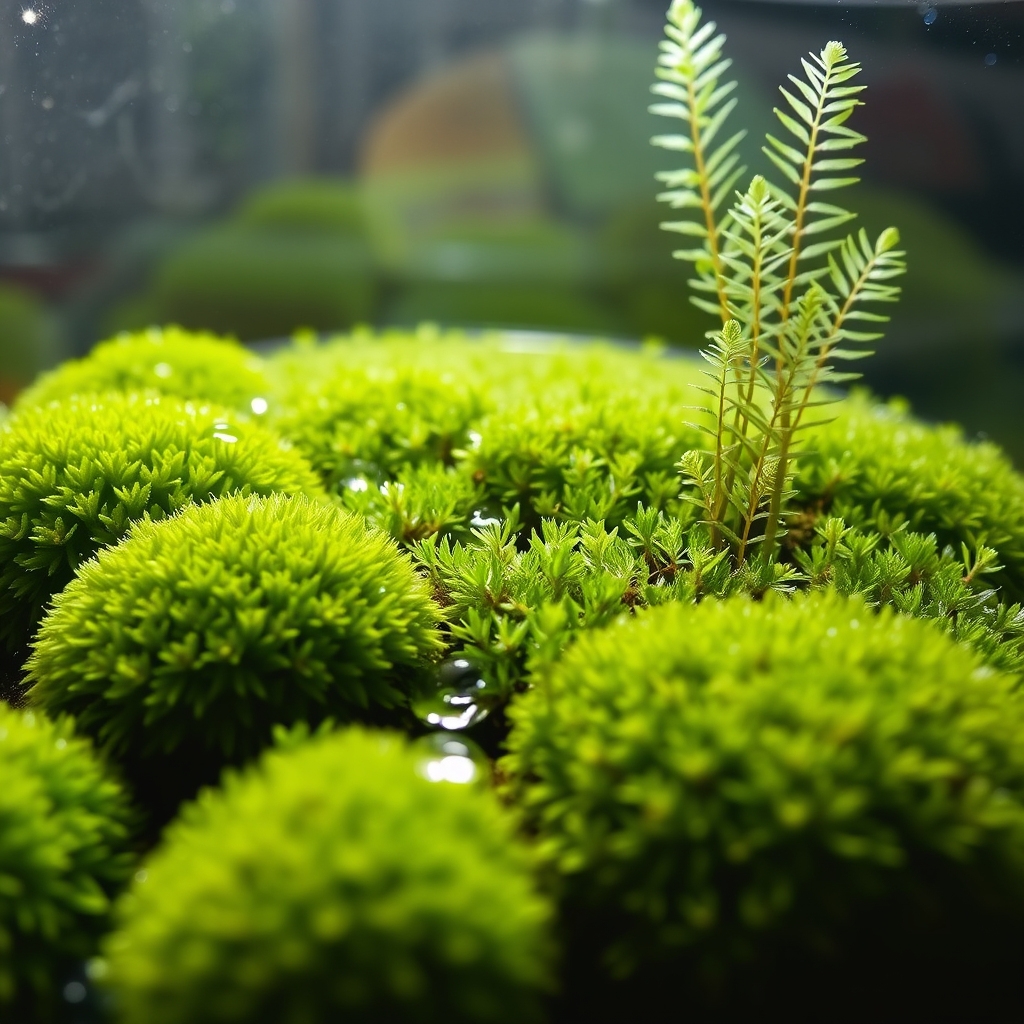
Moss is a fantastic and affordable way to add lush greenery to a terrarium, creating a natural and vibrant environment for your plants and animals. There are several moss varieties that thrive in the humid, enclosed conditions of a terrarium, each offering unique textures and shades of green. Not only does moss enhance the aesthetic appeal, but it also helps maintain humidity and provides a soft ground cover for small creatures.
One popular option is sheet moss, which grows in flat, carpet-like layers and is easy to place over soil or rocks for an instant green effect. Another great choice is cushion moss, which forms soft, rounded clumps that add depth and a forest-like feel to the setup. For a more delicate look, haircap moss with its fine, feathery structure can be used to mimic miniature trees or shrubs.
When selecting moss for your terrarium, consider sourcing it from local garden centers or online suppliers to keep costs low. Many types of moss can also be sustainably harvested from your own backyard or nearby wooded areas, provided you have permission and follow ethical foraging practices. With minimal care, moss can transform your terrarium into a thriving, green oasis without breaking the bank.
Miniature Figurines for Playful Accents

Miniature figurines are a delightful and affordable way to add playful accents to a terrarium. These tiny decorations come in a wide variety of styles, including whimsical fairies, cute animals, tiny houses, and even miniature garden tools. They bring a sense of charm and personality to the small ecosystem, transforming it into a magical, storybook-like scene that captures the imagination.
Available at craft stores, online marketplaces, and even dollar stores, miniature figurines are often budget-friendly, making them an accessible option for terrarium enthusiasts. They can be easily placed among plants, rocks, or moss to create focal points or hidden surprises within the terrarium. Whether you’re crafting a fairy garden theme or simply adding a quirky touch, these small accents allow for endless creativity without breaking the bank.
When choosing figurines, consider the scale and theme of your terrarium to achieve a cohesive look. Opt for weather-resistant materials if your terrarium is exposed to moisture, as some figurines may degrade over time. With a little thought and placement, these tiny additions can elevate the visual appeal of your terrarium, making it an enchanting centerpiece in any space.
Colored Sand for Vibrant Layers
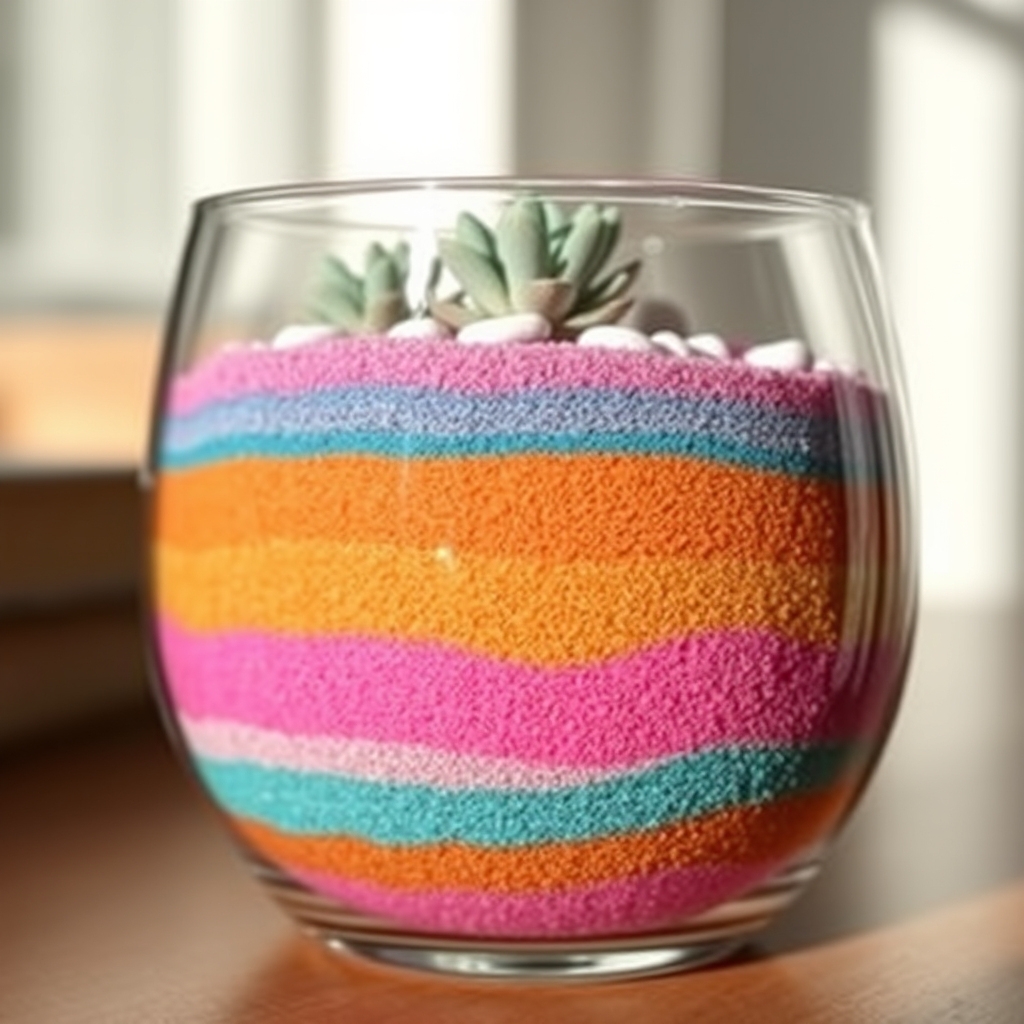
Colored sand is an excellent and affordable way to add vibrant layers to your terrarium, enhancing its visual appeal with minimal effort. Available in a wide range of hues, from bold reds and blues to soft pastels, colored sand allows you to create striking contrasts or harmonious gradients within the terrarium’s base. This simple addition can mimic natural landscapes like deserts or beaches, or even craft a whimsical, fantasy-inspired look depending on your design vision.
Beyond aesthetics, colored sand is easy to work with and budget-friendly, often found at craft stores or online in bulk quantities. You can layer different colors to build depth or mix them for unique effects, making it a versatile decor option for any terrarium size or theme. Just make sure the sand is safe for your plants or animals if they’ll come into direct contact with it, as some dyed sands may not be suitable for live ecosystems.
For best results, start with a base layer of neutral sand or gravel for drainage, then add your colored sand on top in thin, even layers using a spoon or funnel for precision. This technique not only elevates the terrarium’s style but also helps define distinct zones within the enclosed environment, making your miniature world pop with personality.
Small Shells for Coastal Vibes
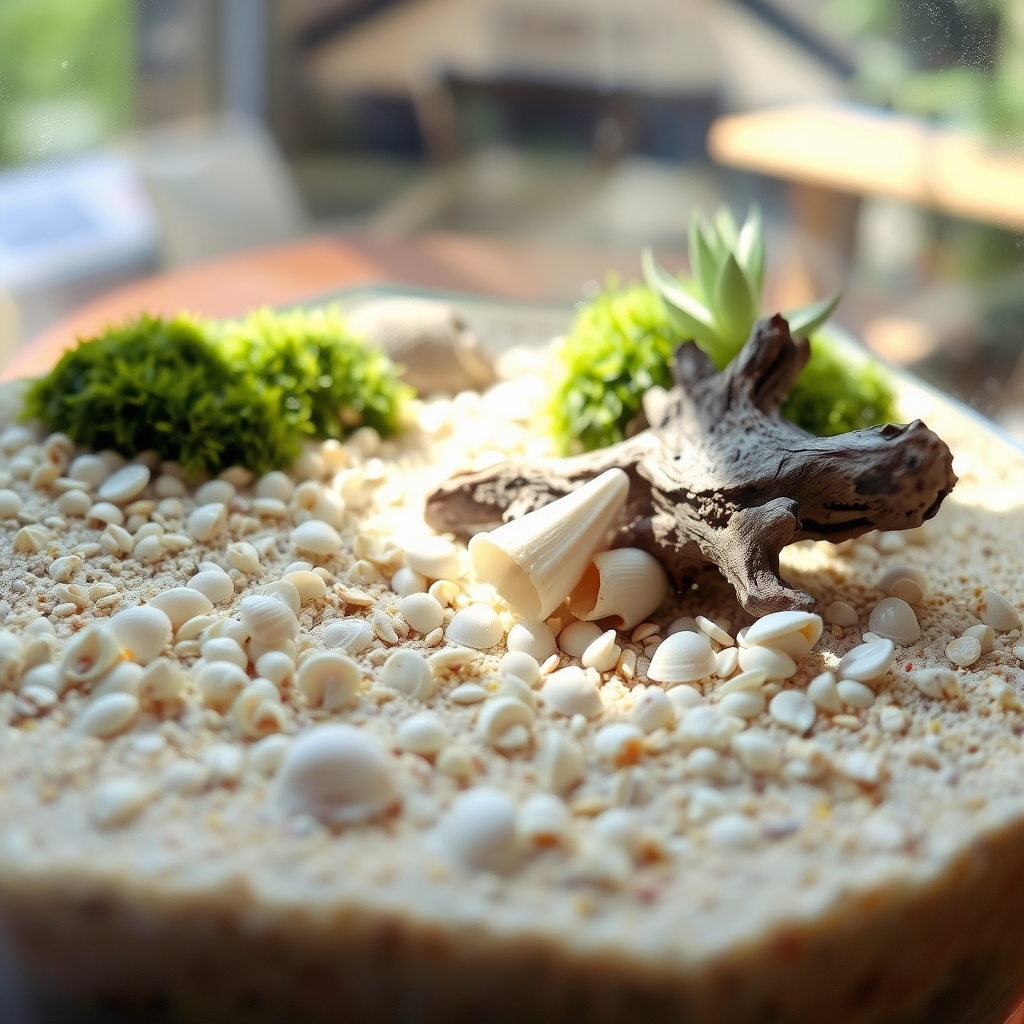
Small shells are an excellent and affordable way to bring coastal vibes to your terrarium. These tiny treasures can be collected from beaches during a seaside stroll or purchased in bulk from craft stores at a low cost. Their natural textures and muted colors, such as soft whites, creams, and grays, evoke the serene essence of the ocean, making them perfect for creating a beach-inspired miniature landscape.
Incorporating small shells into your terrarium is simple and versatile. You can scatter them across the substrate to mimic a sandy shoreline or cluster them around rocks and driftwood to enhance a nautical theme. For added creativity, pair them with small pieces of sea glass or miniature figurines like tiny boats or lighthouses to complete the coastal aesthetic.
Beyond their decorative appeal, small shells are durable and require no maintenance, making them a practical choice for terrarium enthusiasts. They also provide a subtle contrast to lush greenery or vibrant moss, balancing the overall design with a touch of natural elegance. Whether you’re crafting a tropical escape or a serene seaside scene, small shells are a budget-friendly way to elevate your terrarium’s charm.
Tiny Pinecones for Woodland Appeal

Tiny pinecones are a fantastic and affordable way to bring a natural, woodland charm to your terrarium. These small, organic elements mimic the forest floor, creating a realistic and cozy environment for your miniature ecosystem. You can often find pinecones for free by foraging in local parks or wooded areas, or purchase them in bulk at craft stores for a low cost, making them a budget-friendly decor option.
To use tiny pinecones effectively, place them strategically around the base of plants or along pathways in your terrarium to enhance the naturalistic vibe. Their earthy tones and varied textures add depth and interest without overwhelming the small space. For an extra touch, you can lightly coat them with a clear sealant to preserve their look and prevent crumbling over time in the humid terrarium environment.
Beyond aesthetics, pinecones can also serve a functional purpose by providing hiding spots for small creatures like amphibians or insects if your terrarium houses live inhabitants. Just make sure the pinecones are clean and free of pests or sap before adding them, as this helps maintain a healthy environment for your terrarium’s ecosystem.
Glass Beads for a Touch of Sparkle

Glass beads are a fantastic and affordable way to add a touch of sparkle to your terrarium. These small, shiny decorations come in a variety of colors and sizes, allowing you to customize the look of your miniature ecosystem. Whether you scatter them across the substrate or cluster them in specific areas, glass beads can mimic the appearance of dewdrops or tiny jewels, enhancing the visual appeal of your terrarium.
Beyond their aesthetic value, glass beads are also practical for terrarium setups. They are non-toxic and safe for most plants and small creatures, making them a worry-free addition. Additionally, they can help with drainage by creating small pockets of space in the soil, preventing water from pooling and reducing the risk of root rot.
For the best effect, mix different shades of glass beads or pair them with other natural elements like pebbles or moss. This combination can create a dynamic and eye-catching display that elevates the overall design of your terrarium without breaking the bank.
Handmade Clay Ornaments for Personal Flair
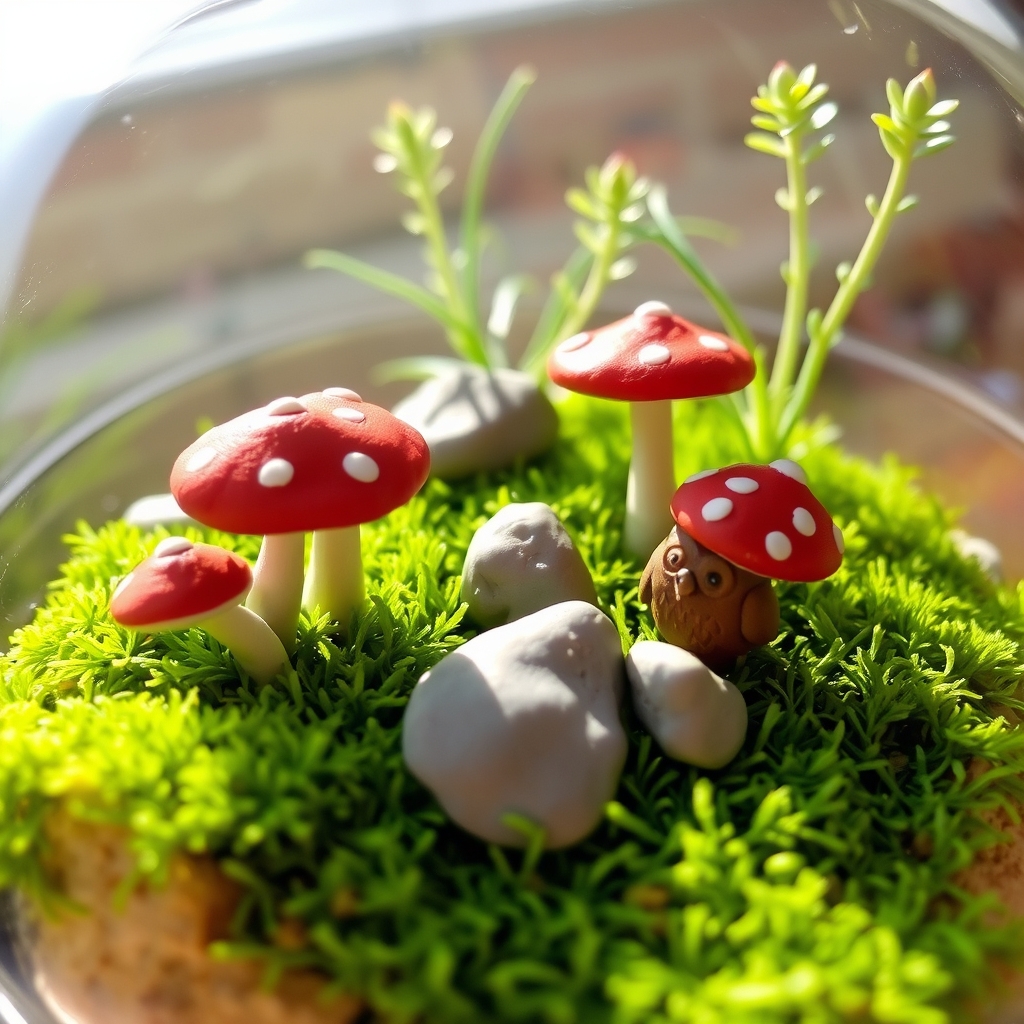
Handmade clay ornaments are a fantastic way to add a personal touch to your terrarium while keeping costs low. Using air-dry clay or polymer clay, you can craft unique decorations such as miniature mushrooms, tiny rocks, or even small animal figurines that complement the natural aesthetic of your terrarium. These ornaments allow you to customize shapes, sizes, and colors to match your vision, making each piece a reflection of your creativity.
Creating these ornaments is simple and requires minimal materials, often just clay, basic sculpting tools, and paint for finishing touches. Start by shaping the clay into your desired design, let it dry or bake it according to the instructions, and then paint or seal it to protect the surface. This DIY approach not only saves money compared to store-bought decor but also provides a fun, hands-on activity to personalize your terrarium.
Additionally, handmade clay ornaments can be tailored to fit specific themes, such as a whimsical fairy garden or a rugged desert landscape. You can experiment with textures by adding imprints or carvings to mimic natural elements like bark or stone. This level of customization guarantees that your terrarium stands out as a unique, budget-friendly display of your artistic flair.
Repurposed Trinkets for Unique Details

Repurposed trinkets can add a whimsical and personalized touch to your terrarium without breaking the bank. Items like old buttons, small figurines, broken jewelry pieces, or even tiny toys can be transformed into eye-catching decorations. These objects, often tucked away in drawers or thrift store bins, can mimic natural elements or create a miniature story within your terrarium, making it truly one-of-a-kind.
To use repurposed trinkets effectively, consider their scale and material to make sure they complement the terrarium’s environment. For instance, a small ceramic animal can serve as a focal point, while colorful glass beads can replicate dewdrops or pebbles. Clean and sanitize these items before placing them in the terrarium to avoid introducing contaminants, and arrange them thoughtfully to enhance the overall aesthetic without overcrowding the space.
This approach not only saves money but also encourages creativity and sustainability. By giving new life to forgotten objects, you’re crafting a unique miniature world that reflects your personality and resourcefulness, all while keeping costs low.
